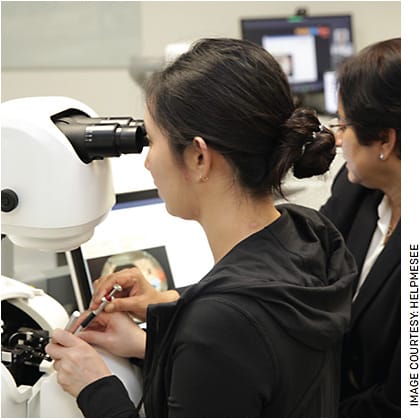HelpMeSee offers a standardized simulation training program to aid training across the globe.

The ophthalmology and aviation industries share much in common. Not only are they both operating at the cutting edge of technological development, but they also require years of training. If something goes wrong in either industry, the consequences can be catastrophic. Pilots train for years using state-of-the-art simulators before they take to the sky commercially, so why shouldn’t ophthalmologists use the same technology before they operate on patients?
That’s the mission of HelpMeSee, an organization founded in 2010 based on the experiences of its founder, Albert L. Ueltschi, in the aviation industry. His son Jim took up the reigns after his father’s passing in 2012, and it has since provided simulation-based training to thousands of doctors around the world.
THEIR PHILOSOPHY
The activities of HelpMeSee are predicated on two philosophies: mistakes help ophthalmologists to become better doctors, and treating curable blindness like cataract requires a surgical ecosystem.
Bonnie An Henderson, MD, the interim president and CEO of HelpMeSee, is a former ASCRS president and a clinical professor at Tufts University School of Medicine. She began working to develop cognitive simulators for ophthalmology more than a decade ago. With the help of a Department of Defense grant, she was able to create a simulator to teach cataract surgery that is now available not just for military trainees but for residents worldwide. She aims to bring her experience, as well as her work with the wider ophthalmic community, to achieve quick and long-lasting results.
“It’s an honor for me to work with HelpMeSee,” Dr. Henderson says. “We have an excellent network of specialists around the world, from France and the United States to China and India, to help cure preventable blindness. We don’t see this as a 50-year mission; for us, this is a 10-to-15-year mission.
HelpMeSee is primarily focused on treating cataract. The organization was previously known primarily for its manual small incision cataract surgery training (MSICS), but its focus now is broader. This includes a next-generation phacoemulsification training program that launched in April this year. These simulation programs allow trainees to make mistakes consistently in a safe environment, allowing them to improve their proficiency and technical skills, says HelpMeSee CMO Dr. Van C. Lansingh.
“You have to learn in a systematic way,” he says. “It’s not enough to be a good phacoemulsification surgeon or MSICS surgeon — you have to be a good overall surgeon. That’s why we teach suturing, to ensure that the people we teach are ready for anything.”
A GLOBAL REACH
HelpMeSee’s approach allows the organization to have a global reach. For example, hundreds of local doctors in China and India are benefiting from the group’s high-tech training programs at several training centers. In addition, the organization established a training center in Madagascar, a country with only two ophthalmologists per 1 million people, the vast majority of whom are located in the country’s capital Antananarivo. This means those who live in rural areas cannot easily access treatment.
For HelpMeSee’s chief of training operations, Jon Pollack, who worked in aviation safety for years, providing safe, affordable and reliable care is the group’s hallmark. “No matter who comes to train with us in Madagascar, Nigeria, Africa and beyond, whether it’s a resident who’s about to go into live surgery for the first time or someone who has worked for longer, they gain so much experience,” he says.
WHAT’S NEXT
Next in sights for HelpMeSee is glaucoma surgery, says Dr. Henderson, as well as a way to teach veterinarians. “The Ueltschi family has been incredibly supportive with their philanthropy,” she says. “Everything that we do, for humans and our canine friends, is thanks to their incredible generosity.” OM








